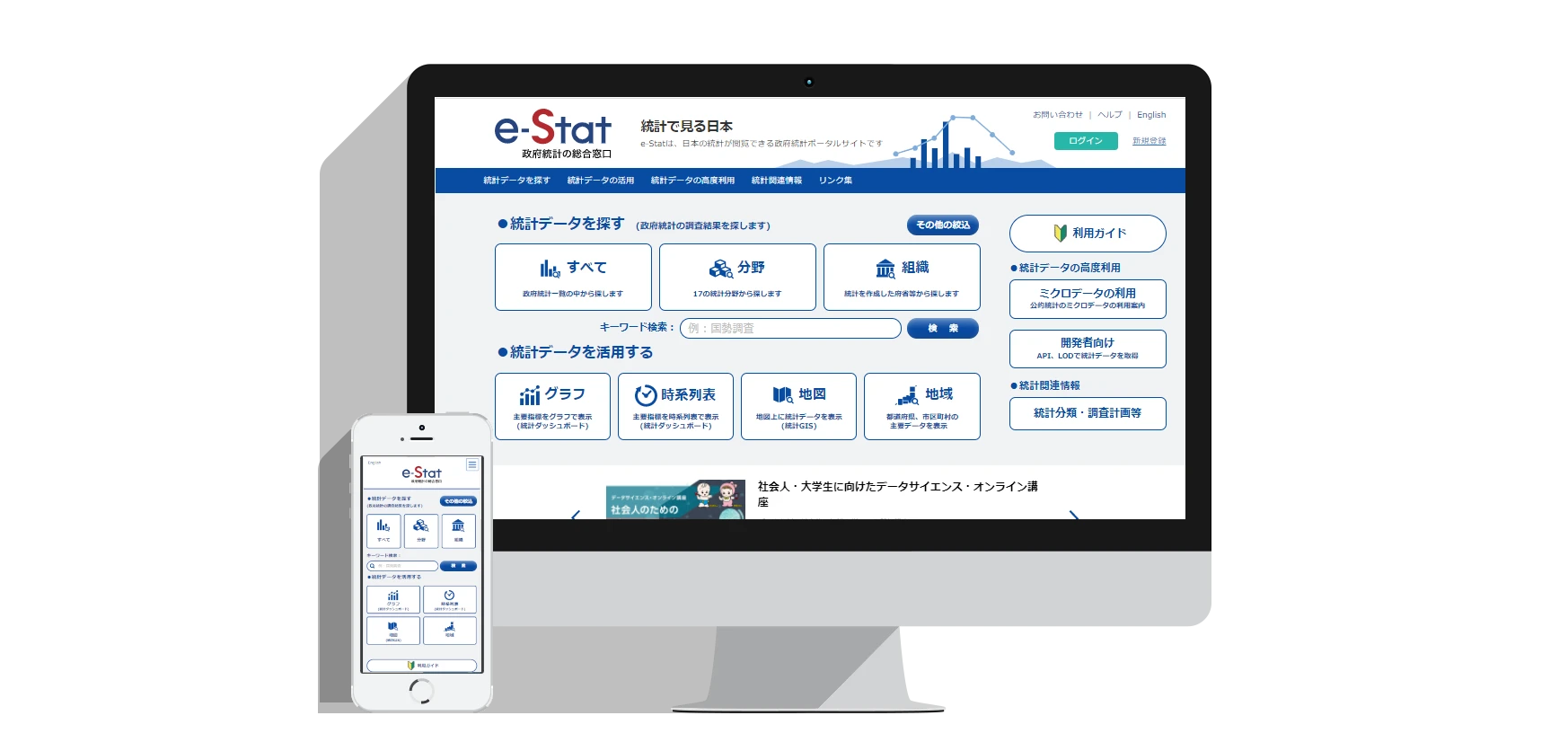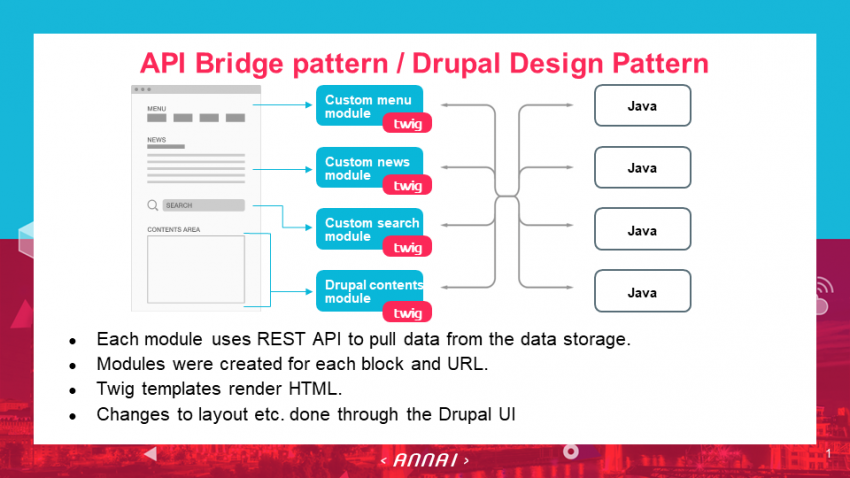
The e-Stat government statistics portal is a one-stop data portal, providing the public with Japanese government statistical data from all government ministries. The primary focus of the site is to allow users to search and find the data they need, but it also provides various other functionality relevant to users of the site.
Household, population, and other statistics collected as part of the national census that takes place every five years is provided to the public on this portal. These statistics are used to aid in marketing, consulting, research, policy planning and a variety of other purposes.
Site Rebuild Goals
The original site, built 10 years previous, had a massive back-end built in the JAVA programming language. The site design and layout, known as the front-end, and the data processing and site administration, known as the back-end, were not separated from each other, therefore requiring specialist programmers to add and manage site contents. This made for expensive running costs and an inability for site administrators to directly interact with the system. As such, the new system needed to maintain the massive existing data back-end, while allowing the client the ability to directly manage their contents, reducing running costs.
ANNAI's Solution
We proposed building a Drupal front-end, where Drupal pulls data from the existing Java back-end, allowing for content management within Drupal.
Why we chose Drupal
Drupal has a proven track record world-wide as a data portal in the statistics field. The Drupal framework allows for creating a set of modules, each interacting with a specific REST API, to pull data from remote systems and display it in blocks.
The majority of Drupal installations use a MySQL database for data storage, however the e-Stat system would instead use the existing Java back-end for data storage. This would allow for site administrators to manage contents through Drupal, and allow content to be displayed through Drupal's TWIG template engine. TWIG lets developers write HTML in a secure manner in which they cannot accidentally expose sensitive data. This means non-specialists can work on the site, reducing costs of design changes from those of the original site.
Drupal also has a thriving open-source community built around it, with tens of thousands of community sponsored modules that can be used to add various functionality to Drupal sites. For situations where community modules do not satisfy the system requirements, Drupal has an advanced framework that we at ANNAI use to customize systems as necessary.
Technical Overview
The existing Java back-end would manage the data storage, and Drupal would manage contents and display.
Drupal - Java Integration Overview

